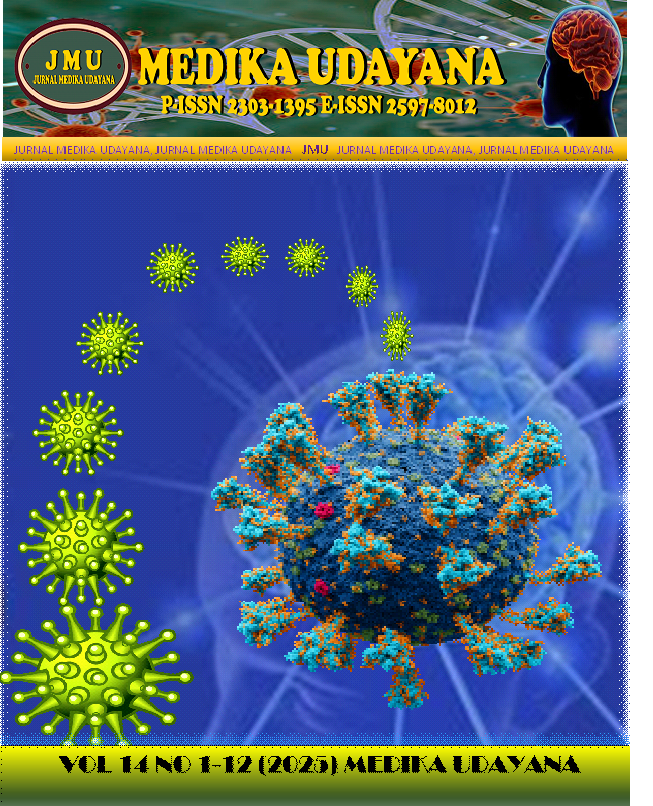Factors Related To The Incident Of Allergic Rhinitis In Children In Denpasar
Abstract
Background: Allergic Rhinitis (AR) is an inflammation of the lining of the nasal mucosa accompanied by a hypersensitivity reaction to allergen exposure, showing symptoms such as nasal congestion, runny nose, itching, and sneezing. Controlling AR is very important given its high prevalence and impact on children's lives. AR in children is often left untreated, leading to complications such as asthma and sinusitis. Factors associated with AR involve internal aspects such as gender and genetic factors (family history of atopy), as well as external factors such as exposure to cigarette smoke and the presence of furry animals. Denpasar, as the capital of Bali, faces a unique environmental challenge with major pollution, including cigarette smoke, and the highest dog ownership rate in Indonesia. The lack of research on the factors of AR in children, especially in Denpasar, necessitates the identification of these factors. Understanding these factors is key to the effective control of AR, given its impact on children's social lives and school performance.
Objective: To determine the factors associated with the incidence of AR in children in Denpasar.
Method: This study is an analytic observational study using a cross-sectional design. The study was conducted on children aged 13-14 years in Denpasar. Data collection used the Stratified Random Sampling technique with alpha 1.96 and beta 0.842, resulting in a minimum sample of 122 samples. The data were analyzed using the Chi Square test with the help of SPSS (Statistical Program for Social Science) software.
Results: The research subjects were 236 children aged 13 years and 14 years. A total of 170 children (72.04%) had experienced AR. AR in children aged 13-14 years is more common in girls (72.5%; IK 95% = 0.753-1.410; P = 0.853). There were 71 children who experienced AR with a family history of atopic disease (85.6%; IK 95% = 0.253-0.748; P = 0.001). There were 112 children who had AR and kept furry pets (73.2%; IK 95% = 0.759-1.172; P = 0.587). 85 children experienced AR and were exposed to cigarette smoke (82.6%; IK 95% = 0.358-0.832; P = 0.002).
Conclusion: Risk factors that have a significant relationship to AR in children in Denpasar in 2023 are a family history of atopy and exposure to cigarette smoke.
Keywords: Allergic Rhinitis, Risk Factors, Pediatric











